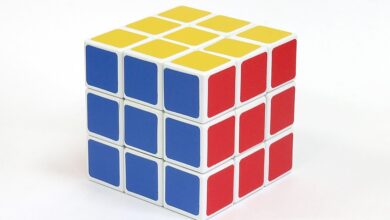Teaching with Puzzle Games: Using Games to Enhance Learning and Development

In recent years, educators have been increasingly harnessing the power of puzzle games to engage students and enhance their learning and development. Puzzle games have long been known for their ability to challenge and stimulate our brains, improving problem-solving skills, critical thinking abilities, and cognitive development. By integrating puzzle games into teaching, educators can create a dynamic and interactive learning environment that actively engages students.
One of the key benefits of using puzzle games in the classroom is that they foster a sense of curiosity and exploration. When students are presented with a challenging puzzle, they are naturally motivated to search for solutions, think critically, and develop strategies. This intrinsic motivation can have a significant impact on students’ learning outcomes, as it encourages them to take an active role in their own education.
Moreover, puzzle games provide a safe space for students to experiment and make mistakes. Failure is an essential part of the learning process, and puzzle games allow students to fail without any negative consequences. Through trial and error, students can learn from their mistakes and refine their problem-solving approaches. This promotes resilience, perseverance, and a growth mindset, which are vital skills for success in all areas of life.
Puzzle games also facilitate collaboration and teamwork among students. Many puzzle games require players to work together, share ideas, and communicate effectively to solve complex problems. By incorporating these games into group activities or projects, educators can encourage cooperative learning and foster a sense of community within the classroom. This not only promotes social skills but also provides an opportunity for students to learn from their peers and develop empathy.
Furthermore, puzzle games can be easily customized to align with specific learning objectives or concepts. Educators can select games that address topics relevant to the curriculum and design activities around them to reinforce key knowledge and skills. For example, a math teacher can use a puzzle game that challenges students to solve equations or practice arithmetic operations.
The integration of technology in education has also made it easier than ever to access a wide range of puzzle games. With the rise of educational apps, online platforms, and interactive software, educators have an abundance of resources at their disposal. These digital puzzle games often come with built-in assessments and progress tracking, allowing educators to monitor students’ performance and provide personalized feedback.
However, it is important for educators to strike a balance between educational content and game engagement. While puzzle games can be highly enjoyable, the focus should always remain on the learning objectives. Teachers should design activities that encourage critical thinking, reflection, and application of knowledge rather than mere repetition of gameplay. A well-structured lesson plan that combines puzzle games with other instructional methods can maximize the learning outcomes.
In conclusion, incorporating puzzle games into teaching provides an effective and engaging way to enhance learning and development. By fostering curiosity, promoting problem-solving skills, encouraging collaboration, and aligning with specific learning objectives, puzzle games create a dynamic and interactive learning environment. As technology continues to advance, educators must continue to explore and leverage the benefits of puzzle games in the classroom to prepare students for the challenges of the 21st century.





